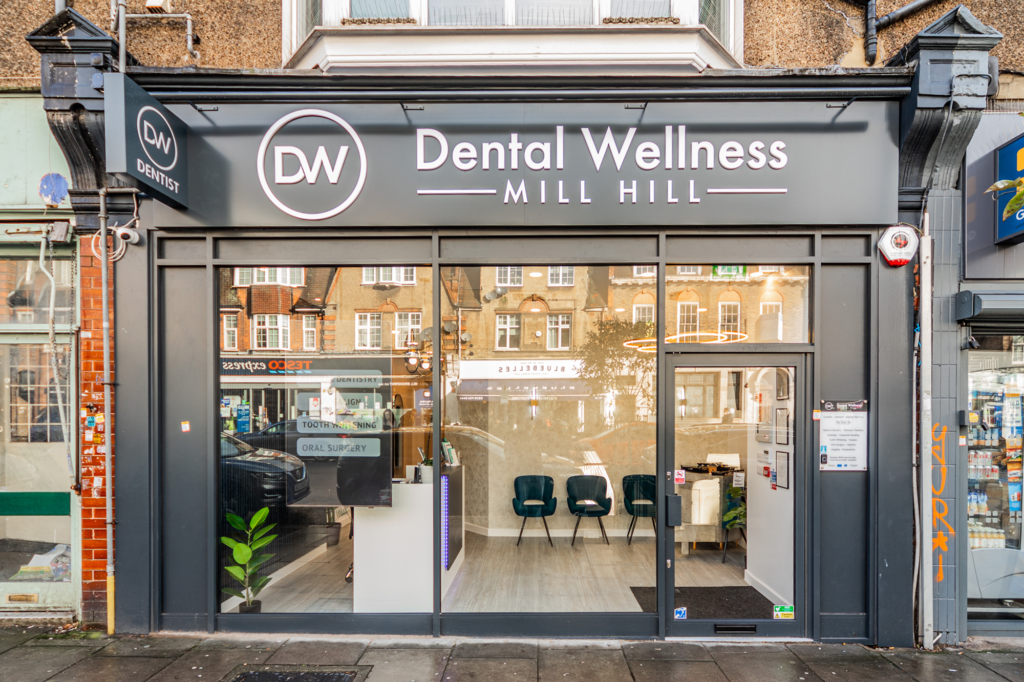
Image Sources : Divo Interiors LTD UK
Designing a clinic that prioritises patient comfort and staff well-being can be challenging, especially when managing noise levels. Dental practices, in particular, experience high noise from medical equipment, conversations, and patient movements, which can lead to stress and discomfort. Effective acoustic insulation is a key solution in creating a comfortable and functional environment for dental practices. By incorporating proper soundproofing techniques, clinics can create a calming, quiet atmosphere that enhances both patient experience and staff productivity. This blog explores the benefits of acoustic insulation in improving clinic environments.
Understanding Acoustic Insulation
Acoustic insulation refers to materials or techniques used to reduce the transmission of sound between different spaces. In the context of dental clinic interior design this could mean reducing the noise of dental drills, patient conversations, or even external sounds from the street. The goal of acoustic insulation is to provide a quieter environment, which can help to mitigate the anxiety often associated with dental procedures.
These systems work by absorbing, deflecting, or blocking sound. There are two primary types of noise: airborne noise (such as voices or equipment noise) and impact noise (caused by vibrations like footsteps or equipment movement). Acoustic insulation targets both types, ensuring that patients and staff are not disturbed by unnecessary noise, contributing to a calm atmosphere.

The Impact of Noise on Patient Experience
The impact of noise on a dental clinic environment is significant, particularly for anxious patients. Loud noises from dental equipment like drills can elevate stress and anxiety levels, making it difficult for patients to relax during procedures. Waiting rooms can also contribute to discomfort, with conversations, phone calls, and general background noise causing distress. Proper acoustic insulation helps reduce noise, improving the patient experience by creating a calmer atmosphere. Additionally, it enhances staff performance by reducing distractions, allowing dental professionals to focus and work more efficiently.
Key Points:
- Loud equipment noise heightens patient anxiety.
- Waiting room noise increases stress for anxious patients.
- Acoustic insulation improves patient comfort.
- Reduced noise helps staff focus and increases efficiency.
Benefits of Acoustic Insulation in Clinics
1. Enhanced Privacy
Acoustic insulation improves privacy in consultation rooms by preventing overhearing of sensitive conversations. Using appropriate materials in walls, floors, and ceilings ensures confidentiality, fostering a professional and respectful environment for both patients and staff.
2. Reduced Stress and Anxiety for Patients
Noise is a significant stressor for patients in clinics. Acoustic insulation absorbs sounds like drills and background chatter, creating a quieter, calming environment that helps reduce anxiety, particularly in dental clinics where patients are often nervous.
3. Improved Focus and Productivity for Staff
Acoustic insulation reduces disruptive noise, helping dental professionals concentrate better and communicate effectively. This creates a quieter, focused environment that boosts job satisfaction, reduces fatigue, and enhances staff morale, leading to improved work performance.
4. Better Communication Between Staff and Patients
Acoustic insulation enhances communication in healthcare settings by reducing noise, ensuring patients can hear instructions clearly and staff can communicate effectively. This improves the overall experience, reducing frustration and promoting a more efficient, collaborative environment.
Acoustic Insulation Materials & Methods
Incorporating acoustic insulation into dental clinic interior design involves the use of various materials and techniques. Here are some common options:
- Acoustic Panels: These are usually made of foam or fabric and are designed to absorb sound waves.They may be fixed to walls or ceilings to help reduce sound reverberation.
- Acoustic Tiles: Similar to panels, but typically used in ceilings.They are especially effective in soundproofing spaces with tall ceilings or reflective surfaces.
- Soundproof Glass: Used for windows, soundproof glass can block out external noise while still allowing for natural light. This is an excellent option for clinics located in busy urban areas.
- Carpet and Soft Flooring: Hard floors can reflect sound, leading to increased noise and echo, whereas carpet and soft flooring help absorb it.
- Sealing Gaps and Cracks: Even small gaps around doors, windows, or in the walls can allow sound to pass through. Sealing these areas with appropriate materials ensures that the space remains as soundproof as possible.
Incorporating acoustic materials, like ceiling-mounted tiles, can enhance soundproofing in clinics, creating a peaceful environment for patients and staff.
Acoustic Insulation in Specific Clinic Zones
Different areas of the clinic have unique acoustic requirements. Here’s how insulation can be applied in specific zones:
- Waiting Areas: The waiting area is often one of the noisiest spaces in a clinic. Soundproofing measures here, such as soft flooring and acoustic panels on the walls, can help reduce background noise, providing a more relaxing experience for patients before their appointment.
- Treatment Rooms: The noise of dental equipment can be intimidating for patients. Acoustic insulation in treatment rooms helps to absorb sound from drills and other equipment, creating a quieter space for procedures.
- Staff Areas: Staff rooms and offices are also important areas for noise control. When staff are working or having breaks, reducing external noise can improve morale and productivity.

Acoustic Insulation Challenges & Practical Solutions
In urban areas, squat dental practice faces challenges like limited space, nearby structures, and privacy concerns when incorporating acoustic insulation.
Common Challenges and Solutions:
| Challenge | Practical Solution |
| Limited wall space | Use ceiling-mounted acoustic tiles or skylights for natural light. |
| Privacy issues | Install high-level windows or frosted glass for added privacy. |
| Inconsistent lighting | Install internal glass partitions to channel natural light into areas with limited illumination. |
| Patient discomfort from glare | Opt for adjustable blinds or smart glass to control lighting. |
These solutions ensure that acoustic insulation is integrated seamlessly into the clinic’s design, offering the benefits of soundproofing without compromising aesthetics or functionality.
Conclusion
Creating a calming environment in a dental clinic is essential for patient comfort and staff productivity. Acoustic insulation is a vital element in achieving this goal. By reducing noise levels, improving privacy, and enhancing communication, clinics can offer a more pleasant experience for both patients and staff.
For dental practices, including those in urban settings or those with limited space, incorporating soundproofing solutions can transform a clinic into a peaceful haven for everyone. Companies like Divo Interiors LTD can help translate these design principles into action, ensuring that every clinic space is optimised for comfort, efficiency, and tranquility.

